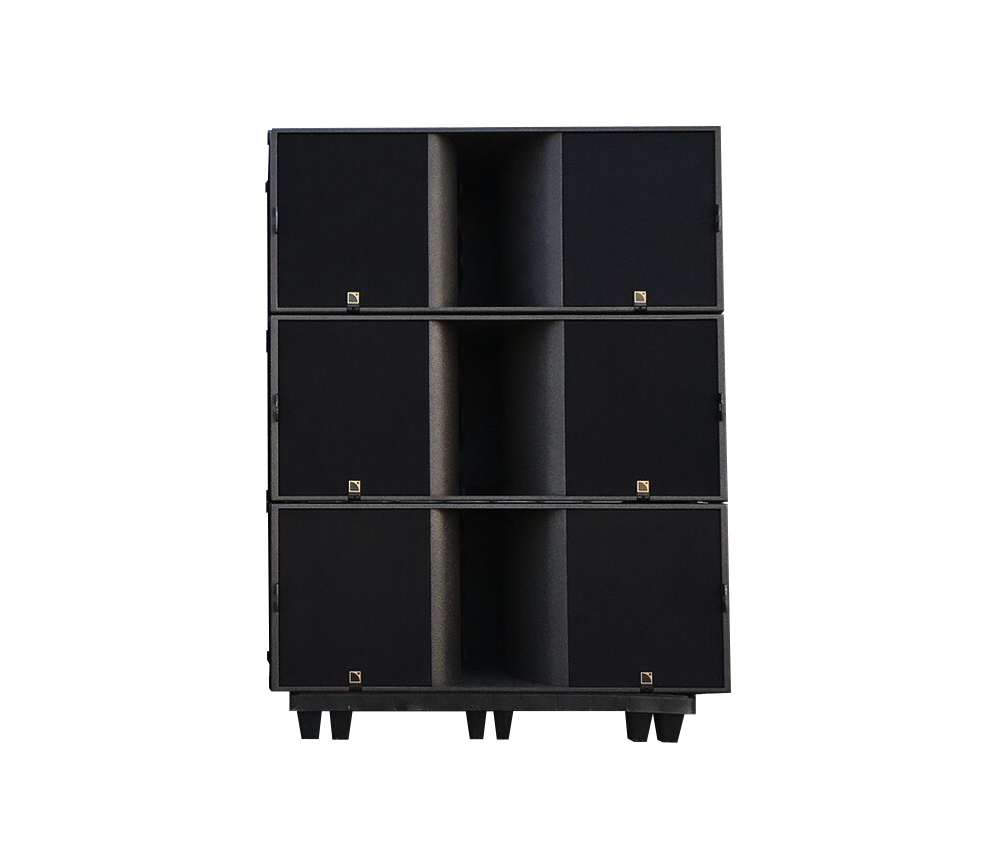Comprehensive Guide to Professional Sound System Components
Jan 03, 2025Discover the essential components of a professional sound system with AV Vietnam's comprehensive guide for optimal audio performance.
Understanding the components of a sound system is essential for creating a seamless audio experience that captivates your audience, whether you're hosting a conference, concert, or any special event.
In this guide, AV Vietnam will walk you through the key components of a professional sound system, helping you make informed decisions for your next event. Let’s explore how to achieve outstanding audio performance!

A successful event cannot be without a professional sound system from AV Vietnam
Key Components of a Sound System
A well-designed sound system is essential for delivering clear and impactful audio. Below, we explore the sound system components and their roles in producing high-quality sound, including the crucial parts of a sound system that work together to create an exceptional audio experience.
Microphones
The microphone is where the sound journey begins. It picks up sound waves and converts them into electrical signals, which are then sent to the mixer for processing. Different types of microphones are suited to different needs. Dynamic microphones are often used in live events, while condenser microphones are better for studio recordings due to their sensitivity and clarity.
The number and type of microphones required depend on the event's purpose. For example, a conference may need several handheld or lavalier microphones to accommodate all speakers, whereas a live music performance might rely on specialized microphones for instruments. Choosing the right microphone is critical to ensuring clear and uninterrupted audio transmission.

AV Vietnam rents out full sets of event microphones
Mixer
The mixer acts as the central hub of the sound system, taking multiple audio signals from microphones, instruments, or other sources and combining them into a single, cohesive output. This processed signal is then sent to the amplifier. For example, in a setup with a microphone and an iPod, the mixer allows you to control the volume of each source independently, ensuring a balanced sound output.
A mixer also provides flexibility in adjusting individual sound levels, such as boosting vocals while keeping background music softer. Advanced mixers may include equalizers and effects, making them invaluable for creating a polished and professional sound experience for both live events and recordings.

Mixer image provided by AV Vietnam
Signal Processors
Signal processors refine and enhance audio signals before they reach the amplifier. Devices like equalizers adjust frequency levels, while compressors control dynamic range, minimizing sudden volume spikes or drops. Reverb units add depth and dimension to the sound, creating a more immersive experience.
These tools are particularly useful in venues with challenging acoustics, such as large halls or outdoor spaces. By addressing issues like feedback or echo, signal processors play a vital role in maintaining consistent audio quality throughout the event.
Amplifiers
The amplifier is the powerhouse of the sound system. It takes the audio signals from the mixer and boosts them to a level that can drive the speakers effectively. The sound output would be too weak to fill the venue without an amplifier. Most amplifiers also feature volume controls, allowing users to adjust the output to suit the event’s needs.
Different amplifiers are designed for different purposes. Some are tailored for home use, while others are built for professional events, offering higher power and more advanced features. Selecting the right amplifier is essential to avoid distortion and ensure a smooth and clear sound experience.

Amplifier images provided by AV Vietnam
Speakers
Speakers convert the amplified electrical signals into sound waves, making them audible to the audience. They come in various types and sizes, each designed for specific functions. For instance, subwoofers handle low-frequency sounds like bass, while full-range speakers reproduce a wider spectrum of audio.
The choice of speakers and their placement are crucial for achieving optimal sound distribution. Indoor events may require smaller, more focused speakers, while outdoor events might need larger, weather-resistant ones. Properly selected and positioned speakers ensure that every corner of the venue receives consistent, high-quality audio.

Image of Vietnamese staff setting up the event sound system
Cables
Cables are the lifelines connecting all components of the sound system. They ensure smooth and reliable signal transmission between microphones, mixers, amplifiers, and speakers. Common types include XLR cables for microphones and TRS or speaker cables for other connections.
When choosing cables, it’s important to consider the event's environment and the components being used. For example, shielded cables (STP) are ideal for most setups, but in cases where interference is a concern, balanced or optical cables may be more suitable. Proper cable management not only prevents signal loss but also ensures a professional and safe setup.

Cables images provided by AV Vietnam
Learn More About Professional Audio Equipment
Professional audio equipment is essential for delivering high-quality sound, whether for recording, mixing, or live sound applications. Below, we explore some key tools that sound engineers and musicians rely on to achieve the best results.
Headphones
Headphones are indispensable for sound engineers and musicians, providing the ability to monitor audio with precision. In live sound scenarios, they help ensure that every element in the mix is balanced and clear. Closed-back headphones are particularly favored as they block out external noise, allowing the user to focus solely on the audio being produced.
Choosing the right pair of headphones can greatly impact the accuracy of monitoring. High-quality headphones provide clarity and a neutral frequency response, enabling sound engineers to detect even the smallest details, ensuring that the final mix meets professional standards.

Headphone images in conferences provided by AV Vietnam
Audio Interfaces
An audio interface serves as a bridge between computers and audio equipment, enabling seamless audio signal transfer. Essential for both studio and live applications, audio interfaces support tasks such as recording, producing, and even live sound mixing. They come in various configurations, with some offering multiple inputs and outputs to accommodate more devices.
For live sound, a reliable audio interface ensures that signals from instruments or microphones are processed and delivered with minimal latency. This makes them an indispensable tool for events that require real-time sound adjustments and high-fidelity audio.
Studio Monitors
Studio monitors are designed to deliver an accurate and neutral representation of audio, making them ideal for mixing and mastering in studio settings. In live sound applications, they serve as a reference point for sound engineers, helping them assess and fine-tune the mix to ensure it translates well to the venue.
Unlike regular speakers, studio monitors provide a flat frequency response, meaning they don’t enhance or suppress any part of the audio. This ensures that sound engineers can make precise adjustments, ultimately achieving a professional-quality mix that sounds great on any sound system.
Microphone Preamps
Microphone preamps play a crucial role in amplifying microphone signals to levels suitable for recording or processing. In live sound environments, preamps are essential for capturing clear and accurate signals from vocalists and instruments.
Advanced microphone preamps often come with additional features like equalization (EQ) and compression, enabling further sound shaping before the signal reaches the mixer. Using a high-quality preamp ensures that every detail of the audio source is preserved, resulting in a polished and professional sound output.
Steps to Set Up a Live Sound System
Creating a seamless live sound experience requires thoughtful preparation and attention to detail. Below are the essential steps to set up a professional live sound system effectively.
Stage Setup
The foundation of a successful live sound system starts with a well-organized stage setup. Stage sound equipment involves strategically placing microphones, instruments, and other equipment in their designated positions to capture and amplify sound effectively. A clear layout not only ensures optimal sound quality but also allows performers to feel comfortable during their performance.
In addition to sound considerations, stage safety and aesthetics are crucial. Ensure the stage is adequately lit to highlight the performers while allowing them enough space to move freely. Proper cable management is also vital to minimize tripping hazards and maintain a clean, professional appearance.

Image of AV Vietnam staff checking sound before events
Sound Check
Before the event begins, a comprehensive sound check is essential to identify and resolve any potential audio issues. This step involves testing each microphone, instrument, and speaker to ensure balanced sound levels and the absence of feedback or distortion.
During the sound check, it's important to fine-tune the settings of the mixer, equalizer, and other audio equipment. By dedicating time to this process, you can guarantee a polished audio output and eliminate unpleasant surprises during the actual performance.
Adjusting Levels
Even after the sound check, continuous adjustments may be necessary to maintain balance and clarity during the event. This step includes refining individual microphone and instrument levels to adapt to the dynamics of the performance.
Advanced tools like compressors and equalizers can be used to control volume spikes, enhance tonal balance, and eliminate unwanted noise. Making these adjustments with precision ensures the audience experiences a rich and immersive sound environment, no matter the venue's size.
>> Read more: Boosting Event Acoustics with 4 Point Sound System Design
Maintaining a Live Sound System
Regular maintenance is essential to ensure a live sound system performs reliably and delivers consistent, high-quality audio. Proactive care helps prevent equipment failure, extends the system’s lifespan, and ensures optimal sound output. Below are the key maintenance tasks to follow.
Regular Inspection
Conducting regular inspections helps identify potential issues before they escalate into major problems. Each component of the sound system should be carefully examined:
-
Cables: Look for signs of wear, such as fraying or kinks. Damaged cables should be replaced immediately to avoid signal interference.
-
Speakers: Inspect the cabinets for cracks or other damage, and check the drivers for any signs of wear or malfunction.
-
Amplifiers: Ensure the cooling fans are unobstructed and functioning properly. Inspect power cords and connectors for damage.
-
Mixing Console: Check the faders, knobs, and switches for wear. Test all channels and inputs to ensure they are operational.
Regular inspections help maintain system performance and avoid costly repairs.

AV Vietnam staff perform periodic equipment maintenance
Cleaning
Keeping the equipment clean is crucial for maintaining its functionality and prolonging its lifespan. Specific cleaning tasks include:
-
Cables: Wipe cables with a clean, dry cloth to remove dust and dirt. For stubborn stains, use a cable cleaner.
-
Speakers: Gently clean grilles with a soft-bristled brush and wipe the cabinets with a damp cloth.
-
Amplifiers: Dust the cooling fans with a soft-bristled brush and clean the exterior with a damp cloth.
-
Mixing Console: Use a brush to remove dust from faders, knobs, and switches, then wipe down the console with a damp cloth.
A clean system not only looks professional but also ensures uninterrupted performance during events.
Repair and Replacement
If any issues are detected during inspection, repairs or replacements should be made promptly. Damaged or malfunctioning components, such as broken cables or faulty drivers, can degrade sound quality or lead to system failure if left unattended.
Timely repairs ensure the equipment remains in peak condition and minimize disruptions during live performances. Investing in high-quality replacement parts can further enhance system reliability.
Conclusion
A professional sound system is an intricate assembly of audio parts working harmoniously to deliver exceptional component sounds. From microphones and mixers to amplifiers and speakers, each element plays a vital role in creating high-quality audio for events of all sizes. Proper setup and regular maintenance are essential to ensure optimal performance and longevity. For premium sound system solutions tailored to your needs, trust AV Vietnam. Contact us today at (+84) 939 311 911 or (+84) 918 640 988 to enhance your event's component sounds!






